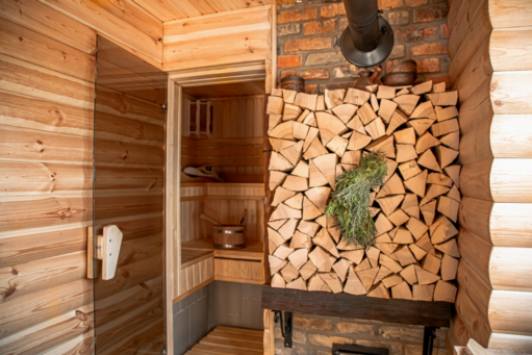Ventilation Techniques for Efficient Wood-Burning Saunas
22 November 2025 by Mila R.Proper ventilation is crucial for maintaining a safe and enjoyable sauna experience, especially in wood-burning saunas. Without effective air circulation, the sauna can become uncomfortably hot and stuffy, or even pose a risk of fire hazards. In this article, we will explore various ventilation techniques and considerations to help you optimize the air quality and energy efficiency of your wood-burning sauna. By understanding the principles of air circulation and implementing the right ventilation system, you can create a relaxing and safe sauna environment for yourself and your guests.

Understanding Air Circulation in Wood-Burning Saunas
Wood-burning saunas rely on proper air circulation to create a comfortable and efficient heating environment. Understanding the principles of air circulation in wood-burning saunas is essential for ensuring optimal performance and a satisfying sauna experience. By implementing effective ventilation techniques, sauna enthusiasts can enjoy a healthier and more enjoyable sauna session.Designing Effective Ventilation Systems for Wood-Burning Saunas
Designing Effective Ventilation Systems for Wood-Burning Saunas Creating an effective ventilation system for a wood-burning sauna is essential for ensuring a comfortable and safe experience for users. Proper ventilation helps to remove excess heat, moisture, and smoke from the sauna, creating a more enjoyable and healthy environment. When designing a ventilation system for a wood-burning sauna, it is important to consider the size of the sauna, the type of stove being used, and the layout of the space. One key component of a ventilation system for a wood-burning sauna is the placement of vents. Vents should be strategically positioned to allow for the circulation of fresh air while also helping to remove stale air from the sauna. Vents should be located near the top and bottom of the sauna walls to create a natural flow of air throughout the space. Additionally, vents should be adjustable in order to control the amount of air entering and exiting the sauna. In addition to vents, windows can also play a crucial role in ventilating a wood-burning sauna. Windows can be opened to allow for the exchange of air and to help regulate the temperature inside the sauna. Additionally, windows can provide natural light and a connection to the outdoors, enhancing the overall sauna experience. It is also important to consider the type of stove being used when designing a ventilation system for a wood-burning sauna. Some wood-burning stoves are designed to be more efficient and produce less smoke, reducing the need for extensive ventilation. However, regardless of the type of stove, it is important to ensure that the ventilation system is adequate to remove any potential smoke or fumes from the sauna. Overall, designing an effective ventilation system for a wood-burning sauna requires careful planning and consideration of various factors. By strategically placing vents, utilizing windows, and considering the type of stove being used, you can create a comfortable and safe environment for enjoying the benefits of a wood-burning sauna.Optimal Placement of Vents and Windows in Wood-Burning Saunas
Optimal Placement of Vents and Windows in Wood-Burning Saunas Proper ventilation is crucial for a wood-burning sauna to function efficiently and maintain a comfortable environment for its users. When it comes to the placement of vents and windows in a wood-burning sauna, strategic positioning is key. Vents should be placed near the stove to ensure that fresh air is drawn in and circulated throughout the sauna. This helps to regulate the temperature and prevent overheating. Additionally, vents should be positioned at varying heights to create a cross-ventilation effect, allowing for better air circulation. Windows are another important factor in the ventilation of a wood-burning sauna. Placing windows strategically can help to further improve air circulation and provide natural light, creating a more pleasant and inviting atmosphere. Windows should be located opposite the vents to encourage airflow and prevent stagnant air pockets. Overall, the optimal placement of vents and windows in a wood-burning sauna plays a crucial role in maintaining air quality, regulating temperature, and enhancing the overall sauna experience. By considering these factors carefully, sauna owners can ensure a comfortable and efficient environment for enjoying the benefits of sauna bathing.Maintaining Air Quality in Wood-Burning Saunas
Maintaining Air Quality in Wood-Burning Saunas Maintaining air quality in wood-burning saunas is crucial to ensure a safe and enjoyable experience for users. The smoke and fumes produced by burning wood can have negative effects on respiratory health if not properly ventilated. Here are some tips to help maintain air quality in wood-burning saunas:Regularly clean and maintain your sauna stove or heater to ensure proper combustion and minimize the production of harmful emissions.
Use high-quality, dry firewood to reduce the amount of smoke produced during burning. Avoid using green or wet wood, as it can create excess smoke and pollutants.
Ensure adequate ventilation by installing vents or windows that can be opened to allow fresh air to circulate in the sauna. This will help to dilute any harmful fumes and improve air quality.
Consider using a chimney or vent hood to direct smoke out of the sauna and away from users. This can help prevent the buildup of toxic gases inside the sauna.
Monitor air quality levels regularly using a carbon monoxide detector or other air quality measurement device. If levels exceed safe limits, take immediate action to improve ventilation and reduce the concentration of pollutants in the air. By following these tips and taking a proactive approach to maintaining air quality in your wood-burning sauna, you can ensure a safe and comfortable environment for relaxation and rejuvenation.